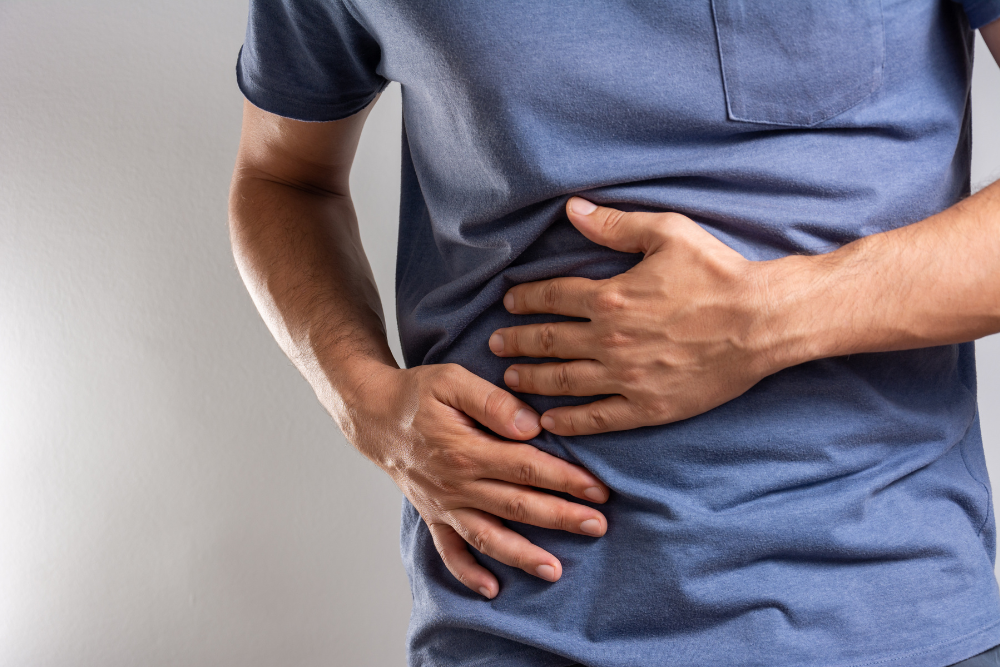Digestive discomfort affects over 74% of Americans regularly, with bloating being one of the most common complaints. While many people reach for over-the-counter solutions, research shows that specific yoga poses can provide significant relief by addressing the root mechanisms behind digestive dysfunction.
This guide breaks down the most effective poses, backed by clinical research, plus our 2-minute quiz to identify your unique digestive triggers and create a personalized plan that actually works for your body.

Table of contents
Why Yoga Works for Digestive Issues ?
Yoga's effectiveness for digestive health isn't just anecdotal, it's backed by solid research. A study published in the International Journal of Yoga found that participants who practiced specific digestive-focused poses experienced a 42% reduction in bloating symptoms and significant improvement in overall gut function.
Yoga helps digestion through three key mechanisms:
1. Activates the Parasympathetic Nervous System
The vagus nerve, which controls digestion, responds directly to deep breathing and gentle movement. When activated, it increases digestive enzyme production and improves gut motility.
2. Improves Blood Flow to Digestive Organs
Certain poses increase circulation to the abdomen, delivering more oxygen and nutrients to digestive organs while helping remove waste products more efficiently.
3. Provides Physical Massage to Internal Organs
Twisting and compression poses literally massage your digestive organs, helping move gas and food through your system more effectively.
Research from the American Journal of Gastroenterology shows that gentle abdominal massage can reduce bloating by up to 58% within 30 minutes.
7 Clinically-Supported Yoga Poses for Digestive Relief
These poses have been studied specifically for their digestive benefits. Practice them in sequence for maximum effectiveness, holding each pose for 30-60 seconds.
1. Wind-Relieving Pose (Pavanamuktasana)
This pose directly targets trapped gas and stimulates the ascending, transverse, and descending colon.
- Lie on your back with legs extended
- Draw your right knee to your chest, clasping hands around your shin
- Hold for 30-45 seconds, breathing deeply
- Lower the leg and repeat on the left side
- Finish by hugging both knees to chest
2. Bharadvajasana (Seated Spinal Twist)
Twisting poses "wring out" digestive organs, improving circulation and helping food move through your system
- Sit with legs extended, then bend your right knee and place your right foot outside your left thigh
- Place your right hand behind you for support
- Use your left elbow against your right knee to deepen the twist
- Hold for 45 seconds, then switch sides
3. Cat-Cow Pose (Marjaryasana-Bitilasana)
The gentle spinal movement massages abdominal organs and stimulates the vagus nerve.
- Start on hands and knees in tabletop position
- Inhale, arch your back and lift your chest (Cow)
- Exhale, round your spine toward the ceiling (Cat)
- Move slowly, matching breath to movement for 1-2 minutes
4. Supta Matsyendrasana (Supine Spinal Twist)
A gentler version of seated twists that's safe to practice closer to meal times.
- Lie on your back with arms in a T-shape
- Draw your right knee to your chest, then cross it over to the left side
- Keep your right shoulder grounded
- Turn your head to the right
- Hold for 60 seconds, then switch sides
5. Apanasana (Knees-to-Chest Pose)
This gentle compression pose helps with both upper and lower digestive issues.
- Lie on your back and draw both knees toward your chest
- Wrap your arms around your shins or clasp your hands behind your thighs
- Gently rock side to side for 30-60 seconds
- Focus on deep belly breathing
6. Balasana (Child's Pose)
Combines gentle abdominal compression with stress reduction both crucial for digestive health.
- Kneel on the floor with big toes touching
- Sit back on your heels and fold forward
- Rest your forehead on the ground
- Extend arms forward or rest them alongside your body
- Hold for 1-3 minutes, breathing deeply
- Lie on your back with your legs up against a wall
- Your body should form an L-shape
- Rest your arms at your sides, palms up
- Close your eyes and focus on slow, deep breathing
- Hold for 5-15 minutes
7. Viparita Karani (Legs-Up-the-Wall Pose)
This restorative inversion improves circulation and activates the "rest and digest" mode.
- Lie on your back with your legs up against a wall
- Your body should form an L-shape
- Rest your arms at your sides, palms up
- Close your eyes and focus on slow, deep breathing
- Hold for 5-15 minutes

Yoga is a powerful tool for digestive health, but it works best as part of a comprehensive approach. The most effective long-term relief comes from addressing your unique digestive triggers through personalized nutrition, targeted supplements, and lifestyle modifications.
Our 2-minute assessment helps identify your specific digestive patterns and matches you with evidence-based treatments that work for your body's unique needs.
This article and its contents have been medically reviewed by Aditya Jain (MD at Harvard Medical School and Op-Ed Fellow at Doximity).
Key take-aways
Specific yoga poses can reduce bloating by up to 60% within 30 minute
Consistent practice provides cumulative benefits for digestive function
Timing and technique matter more than duration or intensity
Individual digestive triggers require personalized approaches beyond movement
Combining yoga with targeted treatments provides the most comprehensive relief
What's the best time of day to practice digestive yoga?
Morning practice helps stimulate digestive function for the day, while evening practice (especially gentle poses) can aid overnight digestion. Avoid intense practice within 2-3 hours of bedtime as it may be too energizing.
Can yoga replace digestive medications?
Yoga is a complementary therapy that works well alongside medical treatments, but should not replace prescribed medications without consulting your healthcare provider. It's most effective when combined with appropriate medical care and lifestyle modifications.
Why isn't yoga helping my chronic bloating?
While yoga addresses symptoms effectively, chronic bloating often has underlying causes like food sensitivities, SIBO, gut bacteria imbalances, or digestive enzyme deficiencies. These require personalized treatment approaches beyond movement therapy.
Which yoga pose is most effective for trapped gas?
Wind-Relieving Pose (Pavanamuktasana) is specifically designed for trapped gas relief. The compression directly stimulates the ileocecal valve and helps release gas from the large intestine. Practice right side first, then left side, then both knees together.










